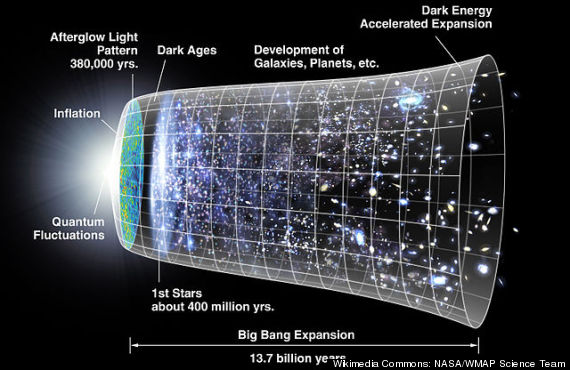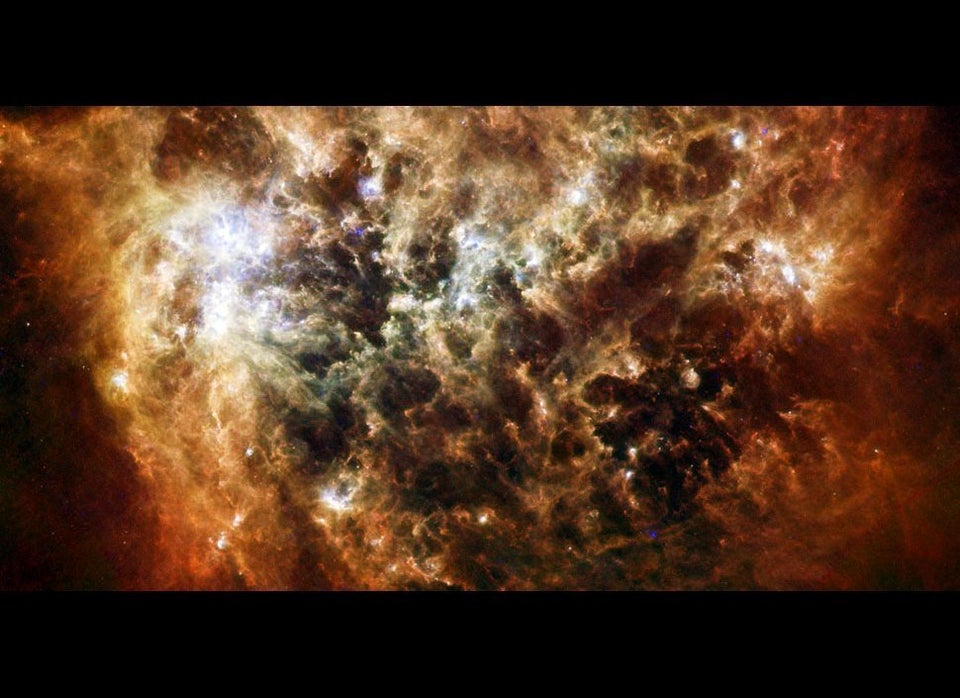
What was it like at the dawn of the universe? No one knows for sure. But with help from powerful space probes, physicists say they have now peered further back in time than ever before. In fact, they say they've glimpsed the early universe as it was a mere 100 years to 300,000 years after the Big Bang--which occurred a mind-boggling 13.8 billion years ago.
What did the scientists learn from their unprecedented look back in time?
"There is a hint that the universe did not evolve exactly the way we expected," Dr. Eric Linder, a theoretical physicist at Lawrence Berkeley National Laboratory and one of the scientists behind the new finding, told The Huffington Post in an email. He said he and a pair of collaborators had found unexpected evidence of "extra energy about 100,000 years after the Big Bang."
The research didn't reveal the source of the extra energy. It might have been caused by a "wild" variant of elusive subatomic particles known as neutrinos, Linder said. Another possibility is that the energy was an early form of dark energy. That's the mysterious stuff that physicists believe permeates the universe--and explains its expansion.
If a clear understanding of either explanation is a bit above your pay grade, just know this: the finding is a big deal to Linder and other physicists whose work helps assess the validity of widely accepted ideas about the early universe.
"It doesn't prove anything wrong," Linder said in the email, "but rather adds extra detail and richness to our understanding of first moments of the universe."

Timeline of the universe.
The new study involved an analysis of data on the so-called cosmic microwave background radiation as observed by the European Space Agency's Planck space observatory and NASA's Wilkinson Microwave Anisotropy Probe (WMAP).
Most of what we know about the universe comes from measurements of the cosmic microwave background. But what is it exactly? Physicist Erik M. Leitch, now with the California Institute of Technology in Pasadena, Calif., gave a simple, almost poetic explanation in a 2003 Scientific American article:
The Cosmic Microwave Background radiation, or CMB for short, is a faint glow of light that fills the universe, falling on Earth from every direction with nearly uniform intensity. It is the residual heat of creation--the afterglow of the big bang--streaming through space these last 14 billion years like the heat from a sun-warmed rock, reradiated at night.
Because the Planck and WMAP probes provide a higher-resolution look at the CMB than was previously available, Linder said, they have given scientists a sort of cosmic "zoom lens."
There are other big zoom lenses, Linder said, including the South Pole Telescope as well as the Atacama Cosmology Telescope and POLARBEAR experiment, both of which are located in Chile. But if these or other similar scientific apparatuses take us even further back in time, it may be awhile before we figure out a question some science geeks love to ask: what came before the Big Bang.
As Linder said, "There are ideas for how to make it a question that could be answered by science, but we're not there yet."
A paper describing the research was published in the journal Physical Review Letters.

